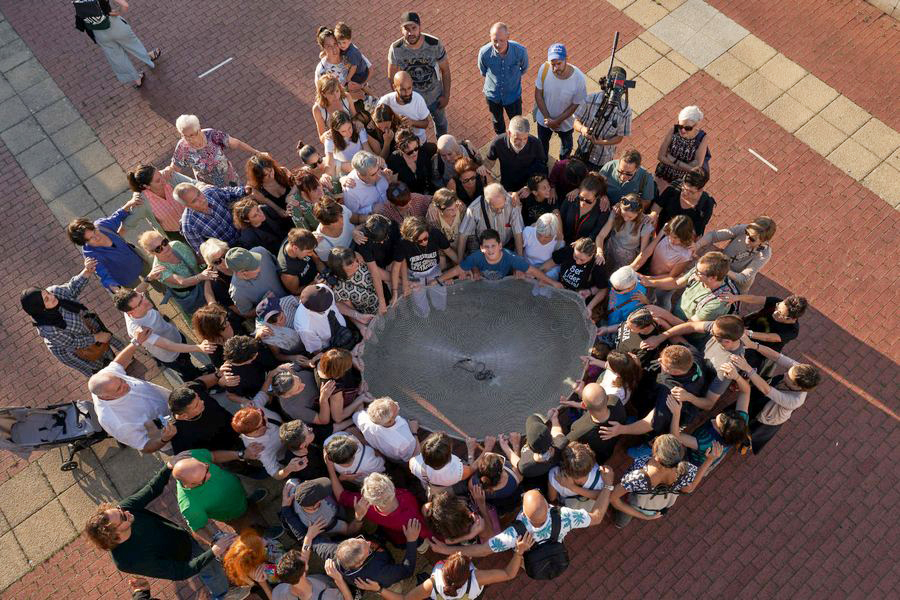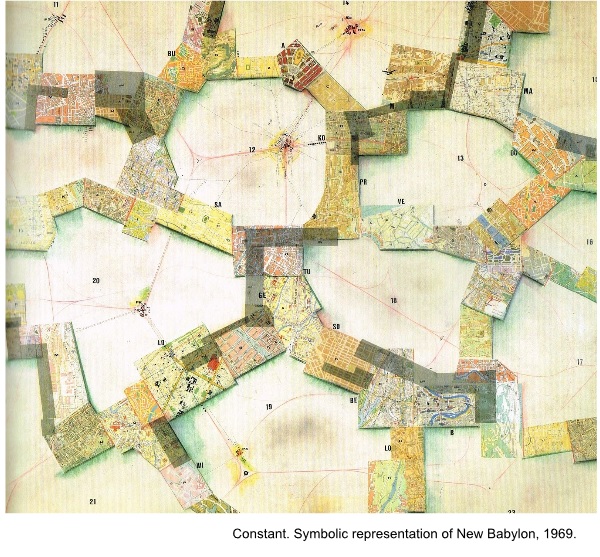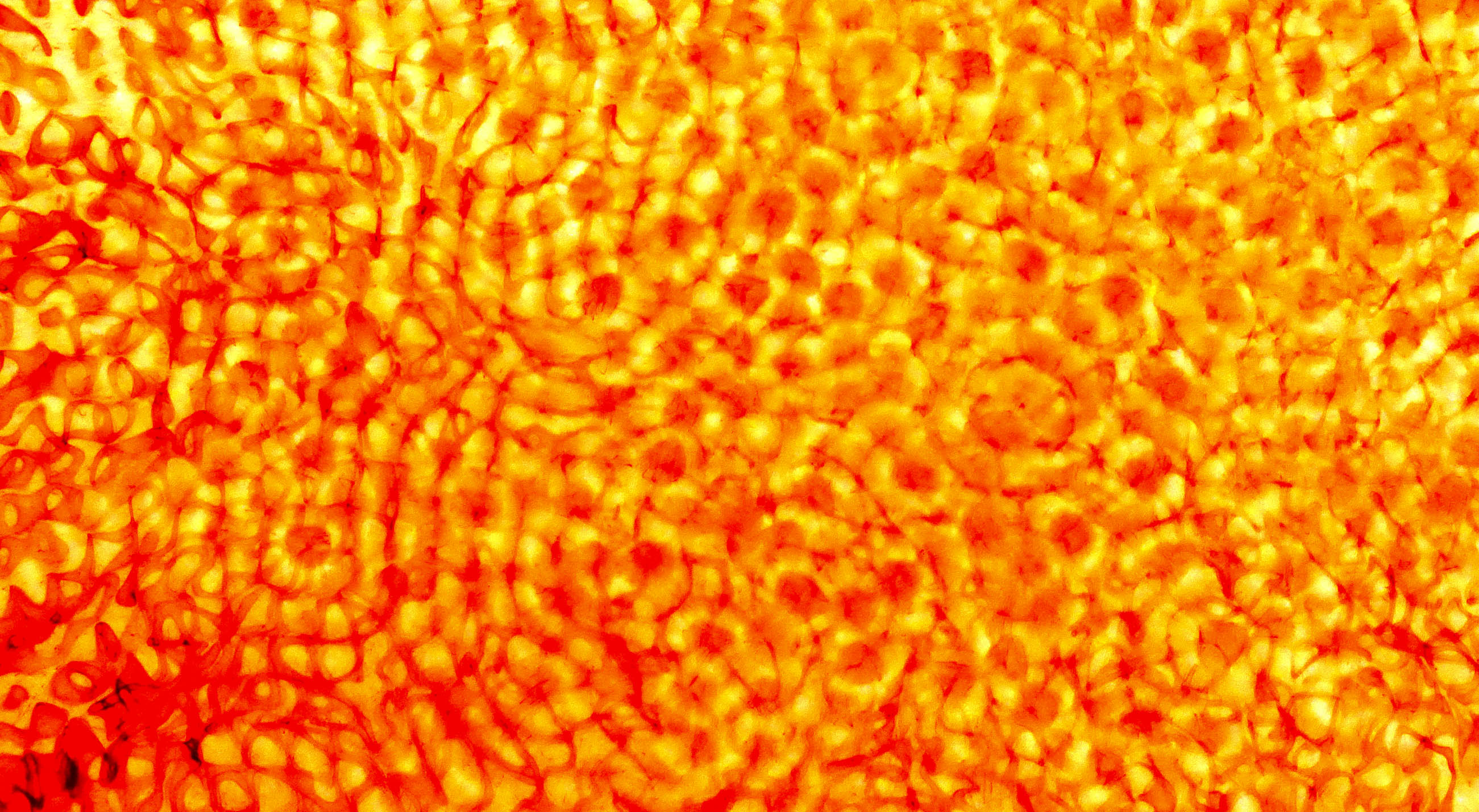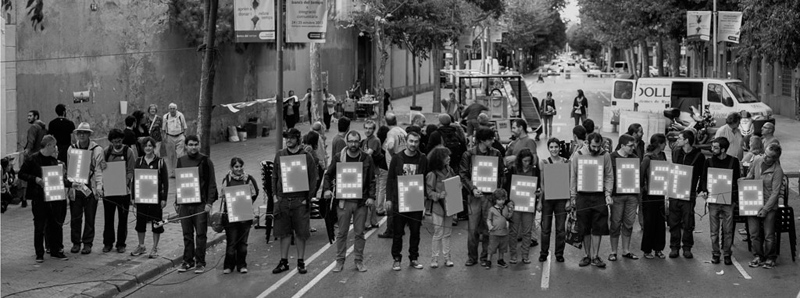Archives
-

Activist Imaginaries: Art and Curatorial Practice as Collaborative Endeavour
Vol. 10 No. 1 (2024)This special issue seeks to address recent developments of socially engaged practice in the field of art production and curation. A significant body of literature has delved into its different manifestations in the contemporary art scene as well as its potential to question established modes of cultural praxis, often embedded in the neoliberal system. Moving from relatively marginal contexts to mainstream, the social turn has achieved significant recognition and visibility in the last two decades, both in museum and academic settings. However, despite opening art and curation to multiple agencies, collaborative practices, as contemporary scholarship suggests, also reveal inconsistencies and points of tension. Given these ambivalences, these are some of the main questions the selected articles address through a hybrid approach combining theoretical reflection and creative practice: How can art create alliances to complement and sustain political action without appropriating collective struggles and experiences? In what ways do socially engaged initiatives contribute to transform structures of cultural production and challenge systems of oppression? How do artists, collectives and curators address problematic power asymmetries within their own creative process and avoid capture mechanisms (Gallisá Muriente et al., 2023), that is to say forms of cognitive extractivism? What contradictions emerge in light of the growing institutional and academic acceptance of these art forms? Can mainstream exposure contribute to dilute the political and contentious dimension of these collective art practices as well as reintroduce them in the conventional art circuits and value-generating systems? How can theoretical reflection on these cultural manifestations be decolonized through non-Western-centric conceptualizations and studies?
Editor: Chiara Sgaramella (Ph.D.), Universitat Politècnica de València
In collaboration with:
Anna Maria Guasch Ferrer, REGAC Editor-in-chief
Anna Pérez Milán (Ph. D. candidate, Universitat de Barcelona)
Sergio Rodríguez (Ph. D. candidate, Universitat de Barcelona)
Special thanks to all the blind peers for ensuring academic quality of this journal and providing valuable feedback to authors.
This issue was made possible thanks to:
Ayudas Margarita Salas (2021), Programa de Requalificación del Sistema Universitario Español (Ministerio de Universidades), funded by the European Union –NextGenerationEU
R+D project "Visualidad y geoestética en la era de la crisis ecosocial. Enfoques analíticos (VIGEO)", PID2022-139211OB-100.
-------
Image credit: Carolina Caycedo, Alejandra Tatiana Montoya and Mireya Perea (2024). Atarraya, collective performance. Courtesy of Museo de Arte Contemporáneo del País Vasco, Artium Museoa. Photography: erredehierro.
-

Repensar Babel. Desafíos del mundo plural.
Vol. 9 No. 1 (2023)Historically, the myth of Babel has assumed responsibility for the geographic, cultural and linguistic
geographical, cultural and linguistic division and has been thought of as an explanatory account of the origin of the social.
origin of the social. It represents the longing for the conquest of a utopian heaven and the consequent seizure of power to
consequent seizure of power to exercise a new order and subjugation; an attitude sanctioned by division, confusion and diaspora. This historical problem, which in myth has its origin in the Judeo-Christian hermeneutic, explains in the same way many other historical phenomena such as translation, an example of a tool of homogenization, of restitution of unity and penultimate of the exegeses of myth. Starting from the ideas of conquest, punishment, difference and dispersion as primordial meanings, the meaning of Babel has been expanding through the different historical phases until reaching our contemporaneity. This multiplication of meanings begins to become visible in parallel to the disintegration of the medieval theological world that had sustained its representation and meaning until the sixteenth century to become a pictorial and literary object, transforming the tower of Genesis into a civil image, a permeable and undefined symbol of multiple identities. -

Transversal Ethico-Aesthetics: Félix Guattari and the Heterogenesis of Being
Vol. 8 No. 1 (2022)This volume includes texts by authors who are explicitly inspired by the ecosophical pragmatics of Félix Guattari or who resonate with it. Published in a blend of English and Spanish, the thirteen articles were written by researchers, artists, art historians, philosophers, and schizoanalysts from Asia, America, and Europe. Their methods, ideas, and approaches highlight the ability of creative practice to map and engender complex, relational, singularized and transversal forms of life. Departing from bold analyses of capitalism’s mechanisms of subjection, their contributions describe how art is able to resist the repressive politics of dominant representations and mobilize processes of existential heterogenesis through molecular becomings. The origin of this publication is the IV International Symposium Mutating Ecologies in Contemporary Art: Machinic Capitalism, Molecularized Selves and Subsistential Territories that took place online on November 25-26, 2020, which had as special guest the philosopher and art theorist Gerald Raunig. This special issue of the Journal of Global Studies and Contemporary Art builds on the project started with the book Mutating Ecologies in Contemporary Art (Edicions de la Universitat de Barcelona) which investigated the conjunction of the ecological turn in contemporary art and Guattarian ecosophy to inquire about the role of art in light of the challenges posed by the environmental degradation and the socio-political crises of today. Thirty years after Guattari’s death and the publication of Chaosmosis (1992), this collection of texts testifies that Guattari’s clinical and critical analyses continue to infuse artistic, ecological, and political practice with a revolutionary potential.
Special issue edited by Christian Alonso, PhD. (Department of Geography, History and Art History, University of Lleida).
Recommended citation: Alonso, Christian (2022). Transversal Ethico-Aesthetics: Félix Guattari and the Heterogenesis of Being. REGAC Journal of Global Studies and Contemporary Art, 8 (1), 1-308.
Editing assistants: Chiara Sgaramella, PhD., Germina Bastardas.
Cover picture: Ferran Lega (2021). Llobregat River Delta I, Without industrial activity. Cymatic cartography, 140 x 80cm. Photography courtesy of the artist.
Castellano
Ético-estética transversal: Félix Guattari y la heterogénesis del ser
Este volumen incluye textos de autores que se inspiran explícitamente en la pragmática ecosófica de Félix Guattari o que resuenan con ella. Publicados en una combinación de inglés y español, los trece artículos fueron escritos por investigadores, artistas, historiadores del arte, filósofos y esquizoanalistas de Asia, América y Europa. Sus métodos, ideas y enfoques destacan la capacidad de la práctica creativa para mapear y generar formas de vida complejas, relacionales, singularizadas y transversales. Partiendo de audaces análisis de los mecanismos de sujeción del capitalismo, sus contribuciones describen cómo el arte es capaz de resistir las políticas represivas de las representaciones dominantes y movilizar procesos de heterogénesis existencial a través de devenires moleculares. El origen de esta publicación es el IV Simposio Internacional Ecologías Mutantes en el Arte Contemporáneo: Capitalismo Maquínico, Seres Moleculares y Territorios Subsistenciales, que tuvo lugar en línea los días 25 y 26 de noviembre de 2020 y tuvo como invitado especial al filósofo y teórico del arte Gerald Raunig. Este número especial de la Revista de Estudios Globales y Arte Contemporáneo continúa el proyecto iniciado con el libro Mutating ecologies in contemporary art (Edicions de la Universitat de Barcelona), que investigó la conjunción del giro ecológico en el arte contemporáneo y la ecosofía guattariana para indagar sobre el papel del arte frente a los desafíos que plantean la degradación ambiental y las crisis sociopolíticas de la actualidad. A treinta años de la muerte de Guattari y de la publicación de Caosmosis (1992), esta colección de textos testifica que los análisis clínicos y críticos de Guattari continúan influyendo la práctica artística, ecológica y política con un potencial revolucionario.
Número especial editado por el Dr. Christian Alonso (Departamento de Geografia, Historia e Historia del Arte, Universidad de Lleida).
Cita recomendada: Alonso, Christian (2022). Transversal Ethico-Aesthetics: Félix Guattari and the Heterogenesis of Being. REGAC Journal of Global Studies and Contemporary Art, 8 (1), 1-308.
Asistentes editoriales: Dra. Chiara Sgaramella, Germina Bastardas.
Imagen de portada: Ferran Lega (2021). Delta del Llobregat I, Sin actividad industrial. Cartografía cimática,140 x 80 cm. Fotografía cortesía del artista.
-

Epistemologías indígenas e imaginación artística
Vol. 7 No. 1 (2020)Este número temático tiene por objetivo rendir cuenta de la reciente inclusión del “pensamiento indígena” en el mundo del arte global. Buscando crear vínculos entre saberes no-occidentales, epistemologías indígenas e imaginación artística, el congreso plantea un abordaje basado en lo que Rosi Braidotti denomina “humanismo indígena no-occidental” o “sistemas de saberes indígenas”. En el marco de unas humanidades críticas que se aboquen a nuestro paisaje post-humano actual, Braidotti formula una serie de preguntas que hacen eco de nuestro objetivo por vincular teorías poscoloniales, humanidades ambientales y epistemologías indígenas: ¿Cómo interpretar el hecho de que se hayan consolidado muy pocas redes institucionales en torno a las humanidades feministas / queer / migrantes / pobres / de-coloniales / diaspóricas? ¿Cuáles son las implicaciones reales de estas desterritorializaciones para el sujeto sapiente post-humano y su práctica disciplinaria? ¿Cómo negociar la paradójica confluencia que tensa, por un lado, una cierta fagocitación de “otras” epistemologías de parte de la academia (occidental) y, por otro, la voluntad—o necesidad—de algunas comunidades por ganar terreno en la esfera social para hacer visibles sus demandas? Éstas son algunas de las cuestiones principales que buscamos discutir a través de una postura trans-disciplinaria en el marco de lo que se podría denominar un campo rizomático de producción de saberes contemporáneos.
This special issue seeks to address the recent inclusion of “indigenous thought” in the global art world by seeking to create links between non-Western knowledges, indigenous epistemologies and the artistic imagination, deploying an approach that Rosi Braidotti terms “non-Western indigenous humanism” or “indigenous knowledge systems”. Within the framework of a critical humanities that addresses our current posthuman landscape, Braidotti poses a series of questions that echo our aim to link postcolonial theories, environmental humanities and indigenous epistemologies: What do we make of the fact that so few institutional patterns have emerged around feminist / queer / migrant / poor / de-colonial / diasporic humanities? What are the actual implications of these deterritorializations for both the posthuman knowing subject and her disciplinary practice? How can we negotiate the paradoxical confluence that tenses a certain fagocitation of “other” epistemologies by (Western) academia and the will—or need—of some communities to gain ground in the social sphere in order to make their demands visible? These are some of the central questions that we aim to discuss through a trans-disciplinary stance in what we might call the rhizomatic field of contemporary knowledge production.
-

La traducción cultural en contextos artísticos
Vol. 6 (2019)El interés por la traducción desde una perspectiva transnacional y global ha producido nuevos enfoques en el análisis de los artefactos artísticos, conduciendo la investigación histórico-artística a disolver sus límites disciplinares entrando en otras esferas del conocimiento. Sin embargo, el concepto de traducción ha sido articulado desde una perspectiva hermenéutica para descifrar las complejas obras de arte contemporáneo en el que coexisten la imagen y el texto. Pese a las recientes intuiciones nacidas desde algunas teorías de arte global que han establecido conexiones entre la producción artística y la traducción cultural, todavía no ha sido desarrollado un trabajo crítico cuyo interés principal haya sido identificar el status quaestionis de un tópico crucial en las teorías históricas del arte: la traducción visual.
The interest in translation, from a transcultural and global perspective, has brought about new approaches to historical artefacts in art history research, leading to an ever-increasing dissolution of boundaries between the various disciplines of art history. Many theories bring Art History, Political Philosophy, Visual Studies, and Translation Studies together to shape a new methodology. Nevertheless, the concept of translation has been articulated as a hermeneutical means to understand the complexity of contemporary works of art in which text and image coexist. It is also true that recent intuitions – especially coming from world art theorists – aimed to establish connections between arts and translation. Yet within critic theory there has never been a concrete research work with the purpose to identify the status quaestionis of a long-time neglected but crucial topic: visual translation. -

Vol. 5 (2017-2018): Redes y circulaciones en la Guerra Fría: diálogos y prácticas interculturales en el sur global (1957-1991)
Vol. 5 No. 1 (2018)Este número monográfico de REG|AC cartografía algunas de las redes culturales de la Guerra fría (1957-1991) desarrolladas a través de, o en contacto con, el sur trasanlántico y el pacífico, teniendo en cuenta las relaciones sociales y políticas generadas a su alrededor, así como sus puntos de encuentro -y a menudo fricción- con las agendas institucionales y el ámbito de la participación ciudadana. Cruzando varios ejes temáticos – las revistas como plataformas de comunicación y circulación; la imagen al servicio de la solidaridad y la propaganda; los artistas como agentes viajeros; y la articulación de políticas y poéticas transnacionales –, las contribuciones reunidas permiten abordar distintos aspectos de estos movimientos y cruces que conforman una geografía política, social y cultural en movimiento.
This monographic issue of REG|AC maps some cultural networks of the Cold War (1957-1991) developed through, or in contact with, the transatlantic and the Pacific South, taking into account the social and political relations generated around them, as well as their points of encounter - and often friction - with institutional agendas and the sphere of civic involvement. Crossing several thematic axes - magazines as platforms of communication and privileged circulation; the image at the service of solidarity and propaganda; artists as traveling agents; and the articulation of transnational politics and poetics -, the collected contributions allow to approach different aspects of these movements and crossings, that form a political, social and cultural geography in movement.
-

Non Textual Utopias / Utopías no textuales
Vol. 4 No. 1 (2016)Within the framework of the 500th anniversary of Thomas More’s Utopia, REG | AC journal dedicates a monographic edition to NON-TEXTUAL UTOPIAS, seeking to reflect on utopias that are not based on the written text. In this respect, it conducts a reflection on artistic practices and the expression of the utopian within contemporary visual culture. Understanding the symbolic as an expanded field that merges with the performative and the spatial, this issue also includes contributions that consider the utopian dimensions of political and communitarian practices.
-

Rethinking the public sphere. Intersections between cultural practices and the collective scenario
Vol. 3 No. 1 (2015)In the last decades we have witnessed an increasing shift of artistic practices towards the social space whose nature is willing to transcend the classical notion of the "public art" and to open new intersection zones between cultural practices and the collective scenario. This turn has motivated a fundamental crossroad that compels social-oriented artistic practices to speak about whether they should contribute to strengthen the established model of social cohesion (an ideal of integration) or on the contrary, they should focus on the imagination and the rehearsal of alternative communal models and constitute itself as an example of other possible instituting practices.
It appears to be that only by trying to resolve of this dilemma the role of cultural practices could meet their expectations beyond the logic of representation and in turn opening up the possibility of transforming or generating new imagery for the social body. On the other hand, the social mutations emanating from the process of political, economic and urban globalization compel artistic practices to rethink its field of action in order to address, from an interdisciplinary approach, fundamental notions such as the new formats of social mobility (subjects, services, commodities, narratives...); the new identity profiles (local, resident, tourist, foreigner, undocumented...); the recognition of spaces susceptible to operate as a socio-political unit (neighbourhood, city) and the modes of articulation of the collaborative and cooperative processes as an alternative to the model of self-sufficient subject model promoted for the capital. The complexity of these questions call for a reflection around the working methodologies that could enable answers to all of these lines of action.
The issue 3 of REG/AC configure the contribution of the Research Group Art Globalization Interculturality (AGI/ART: 2014SGR 1050) to the research platform Dispositivos Post. Prácticas artísticas y redes de acción ciudadana en contextos post-crisis - Seminario Expandido promoted by Fundació Antoni Tàpies and the cultural producer Idensitat, where researchers from Universitat Autónoma de Barcelona, Universitat Politécnica de Catalunya, Universitat Rovira i Virgili, Universitat Ramon Llull, EINA - Centre Universitari de Disseny i Art y Universitat de Barcelona, addressed different methodologies and models of intervention in the public sphere from artistic practices and social sciences. Some of these contributions are collected in this volume, along with works from the Forum Permanente of Instituto de Estudos Avançados from Universidade de Sao Paulo and the research group GIAI / AE from the Universidad Nacional Autónoma de México.
Similarly, the present issue gathers 13 articles selected through a an open call authored by researchers affiliated to centres and international universities such as Universitat de Barcelona, Universitat Autónoma de Barcelona, Universidad de Málaga, Universidad Miguel Hernández de Elche, Universitat Jaume I Castelló, Universidad de Costa Rica, Universidad Nacional de Córdoba, Universidad Federal de Bahia, Universidad de Los Andes – Venezuela, Universität Giessen, California Lutheran University and University of the Philippines.
Lastly, with the Miscellanea section we aimed to gather recent approaches to these questions from researchers associated to the Research Group AGI Art Globalization Interculturality. We also collect an assessment, as an epilogue, by Ramón Parramón, director of Idensitat cultural producer.Martí Peran and Diana Padrón Alonso, guest editors.
-
Memory and the Other: Translocal and Transdisciplinary Memories
Vol. 2 No. 1 (2014)Juan Antonio Ramírez, A Tribute
Juan Antonio Ramírez (1948-2009) was one of the most prestigious art historians, not only on the national panorama, but also—exceptionally—on the international scene. Without a doubt, his greatest legacy to art history, in addition to his dedication to teaching and mentoring future researchers, as well as his commitment to several causes linked to the “craft” of the art historian, have been his books. Numbering over 40 since the appearance of his first work in 1975, and with over 10 books translated into several languages, some in various editions, his publications cemented him as an art historian, but also as a widely read art critic, essayist, poet, novelist and fabulist.
We wish to publicly recognize and show our appreciation of this historian—who left with so many things yet to say, teach, and communicate—through this modest tribute; and more specifically, through the words and thoughts of those who were his pupils, colleagues and friends: Rafael Jackson, Davic Moriente, Julián Díaz Sánches and Carlos Reyero.
Anna Maria Guasch
Thematic Issue: “Memory and the Other: Translocal and Transdisciplinary Memories”
One of the paradoxes of globalization’s impact on artistic production and reception has been its dual alliance with a homogenizing drive and with the utopia of relationality and reciprocal generosity. In this context, Andreas Huyssen (2003) has argued that the discourses of memory have shifted their initial focus from territorialized, nationally bounded forms of memory (the result of a legacy of memory studies based mostly on Holocaust research) towards a memory of the “other” that takes into account the re-territorialization of space, interactions on a local-global level, and dialogic experiences between cultures. Moreover, Huyssen suggests that this memorialist turn makes it possible to think of works of art as repositories for “other”forms of memory insofar as artworks may function as sites that amass memories from different contexts and latitudes, beyond conceptualizations of the national space as a homogenous location with closed boundaries.
In this issue, we focus on the “memorialist turn” in contemporary art and visual studies from a re-territorialized, transnational and transdisciplinary perspective through which the dynamics of alterity come into play. Highlighting the importance of the strategic principle of a dialogic imaginative engagement that opens the “self” to “others”, our aim is to explore the relationship between translocal forms of memory and the possibility of an aesthetic openness towards otherness.
Some of the questions addressed in this number are: how does the memorialist turn in art and visual culture help to reconsider the changing relationships between the global and the local? How are various geographical experiences marked by mobility, displacement and multiplicity, and how is this memorialized in contemporary art and visual culture? How is memory deployed in art for maintaining or questioning relations between Western Europe and other minority contexts, both European and non-European?
Anna Maria Guasch and Nasheli Jiménez del Val, guest editors
MiscelaneaOn this occasion we have invited the participants of the “On Mediation: Theory and Curatorial Practices in Global Art” seminar (AGI-Universitat de Barcelona, 2013-2014) to present the curatorial statements that they developed throughout the interdisciplinary discussions that took place during the theoretical phase of the seminar.
-
Revista de Estudios Globales y Arte Contemporáneo
Vol. 1 No. 1 (2013)


